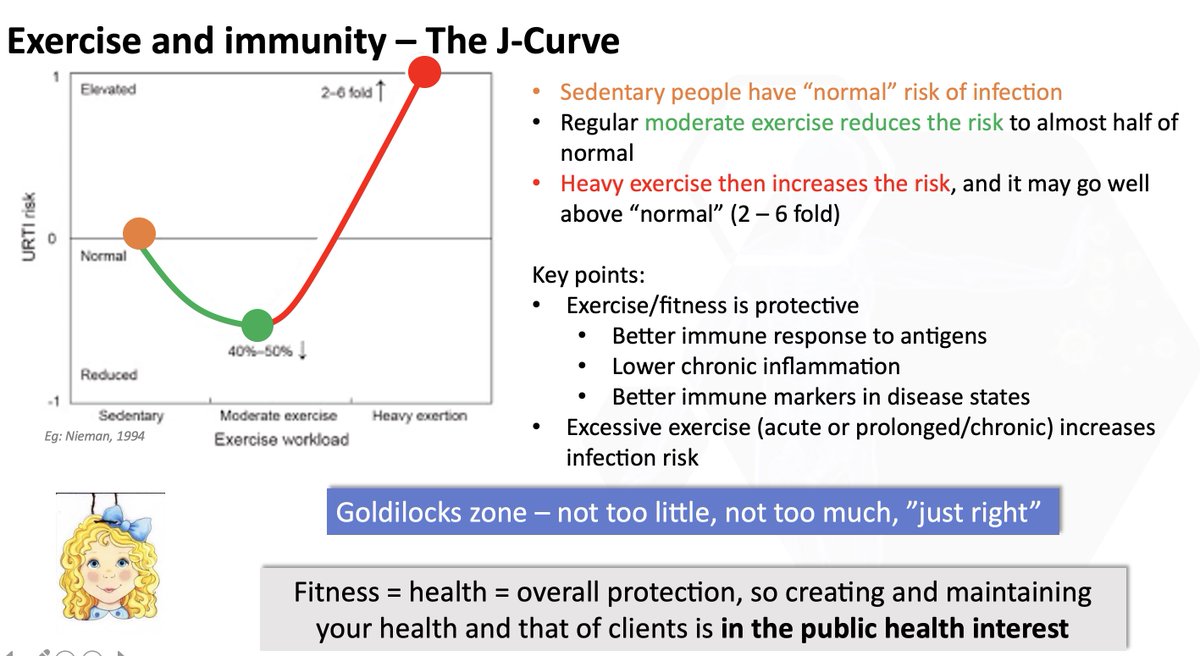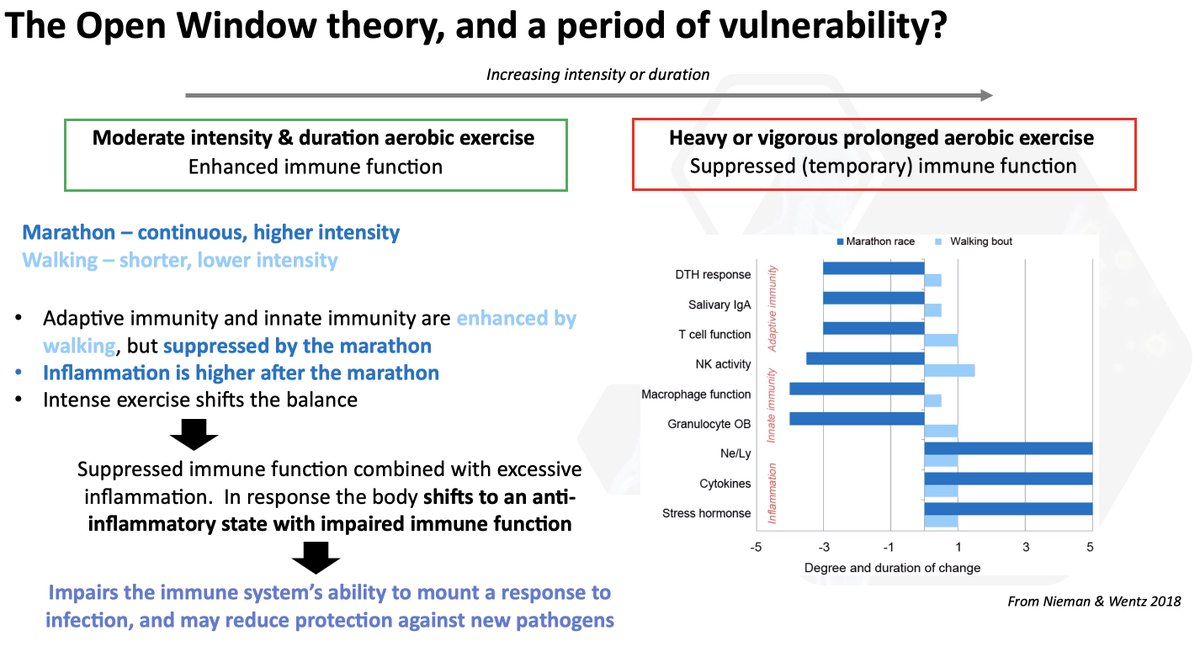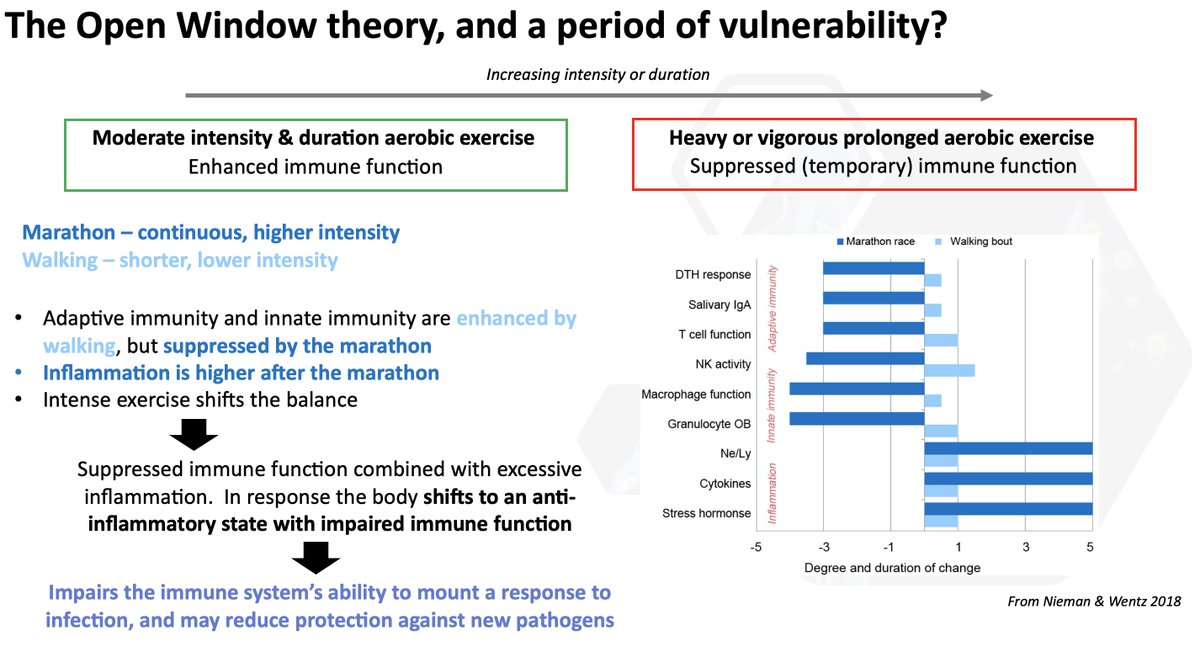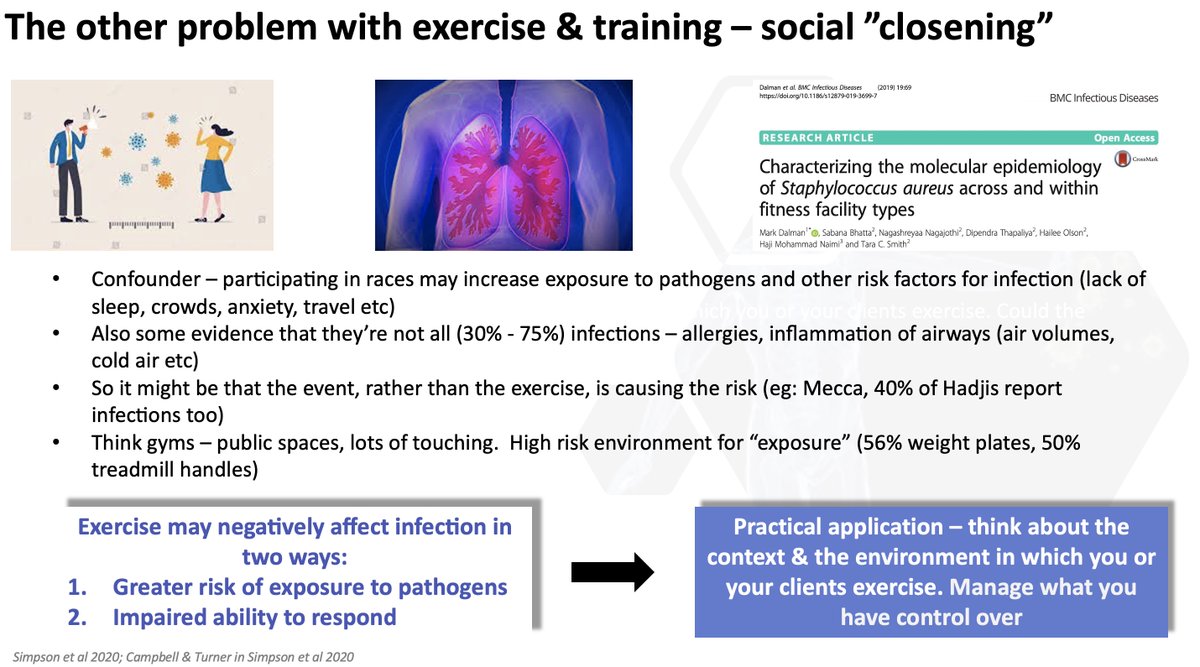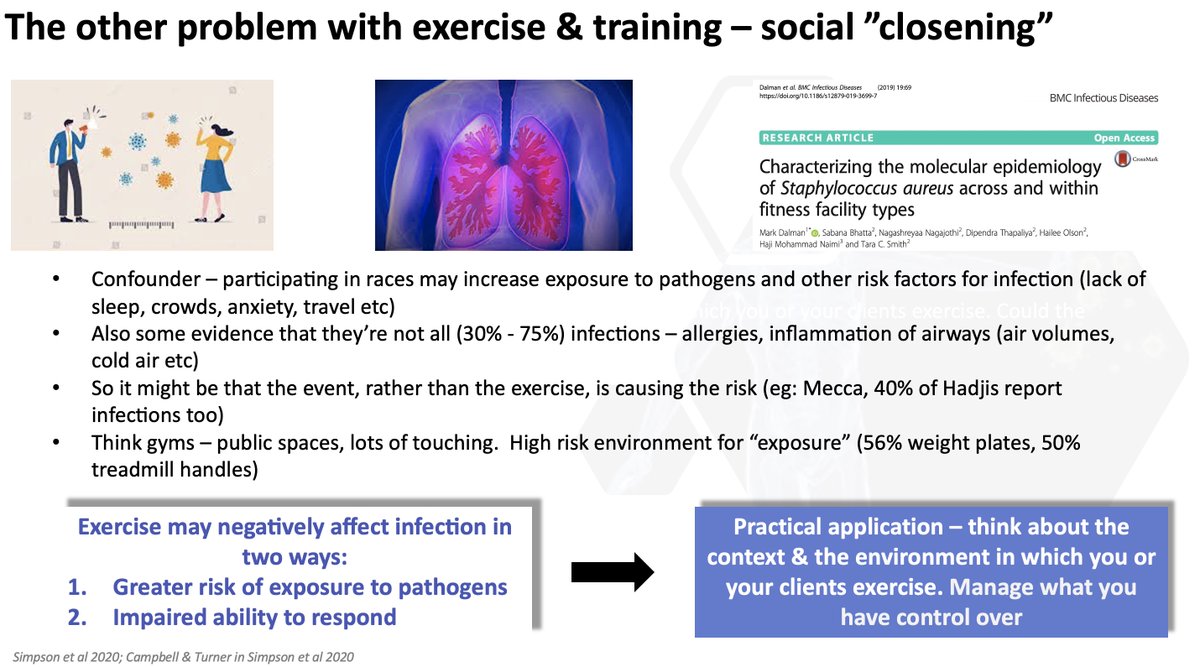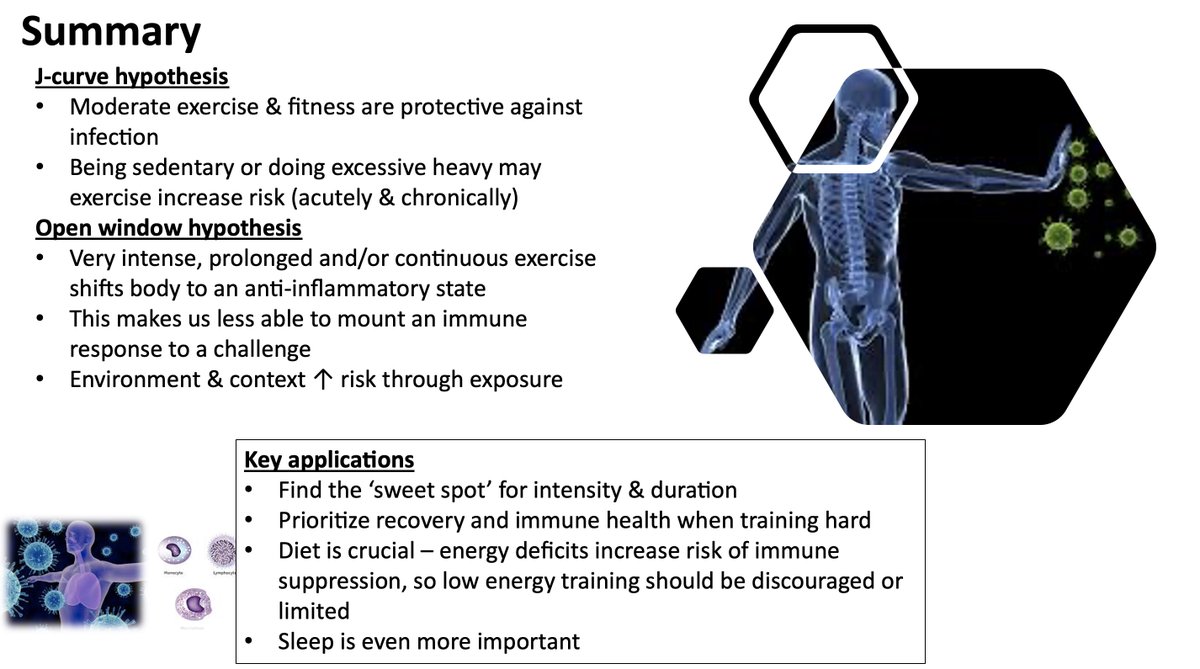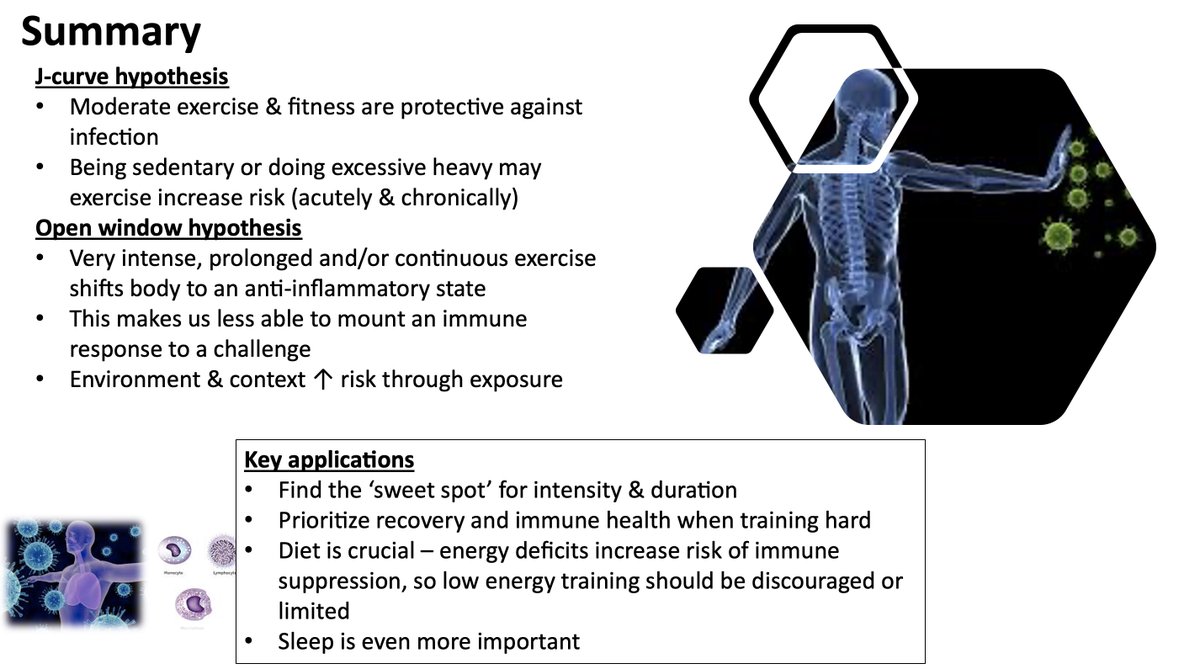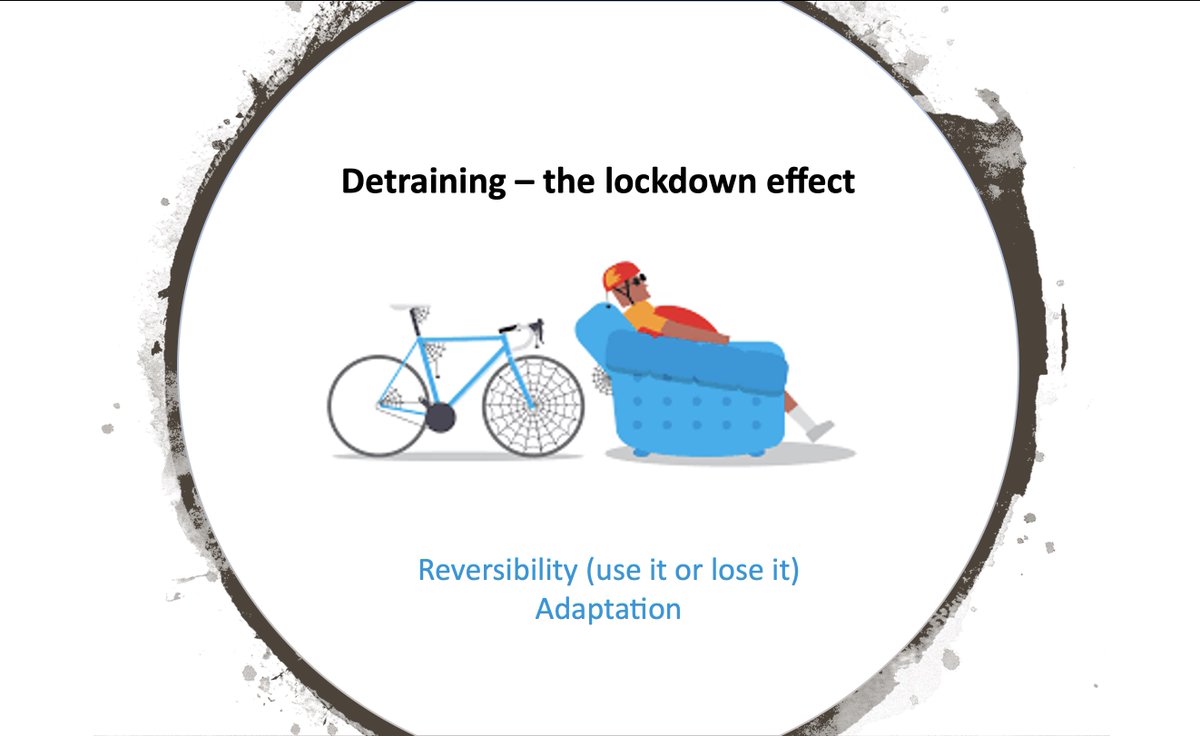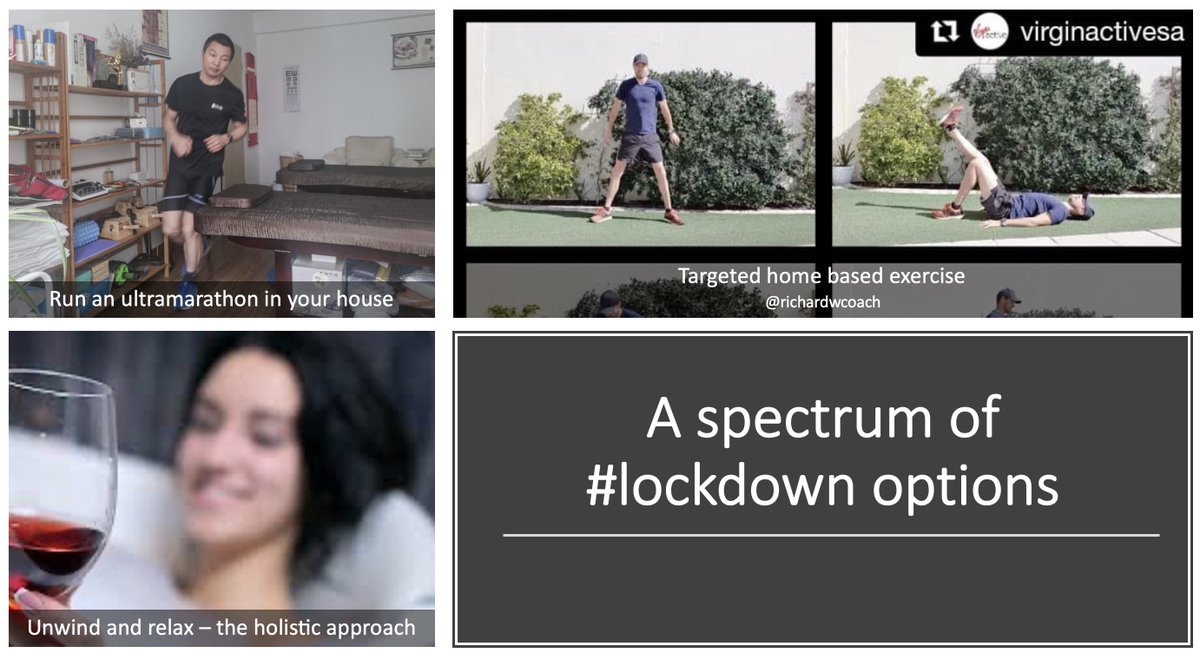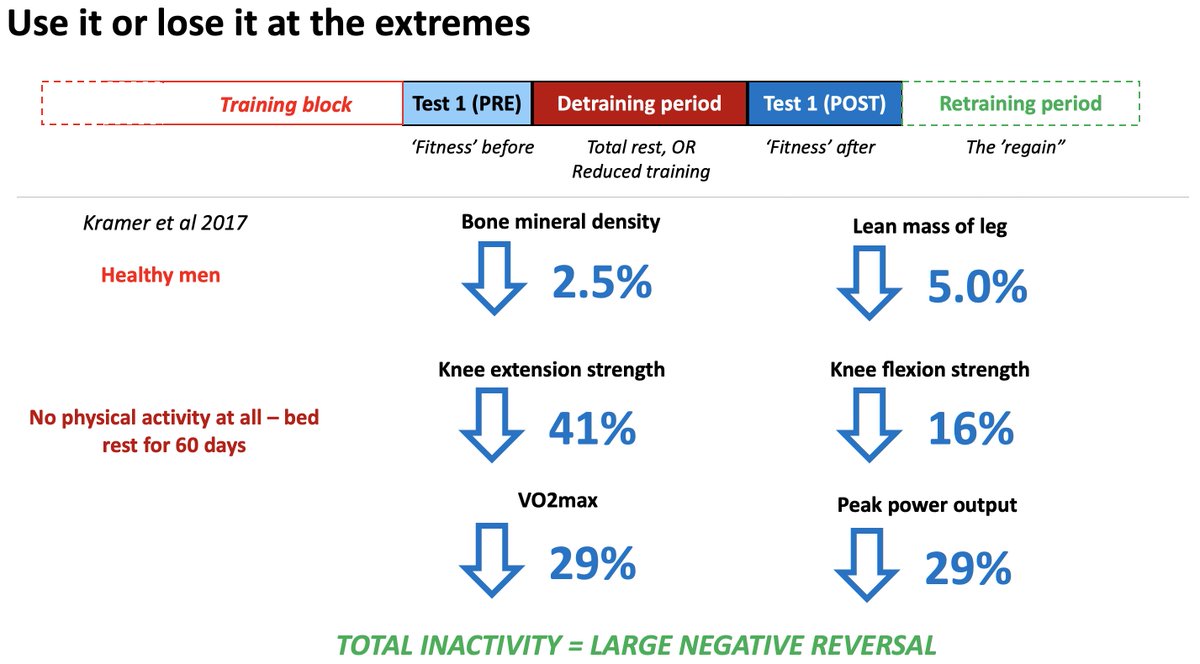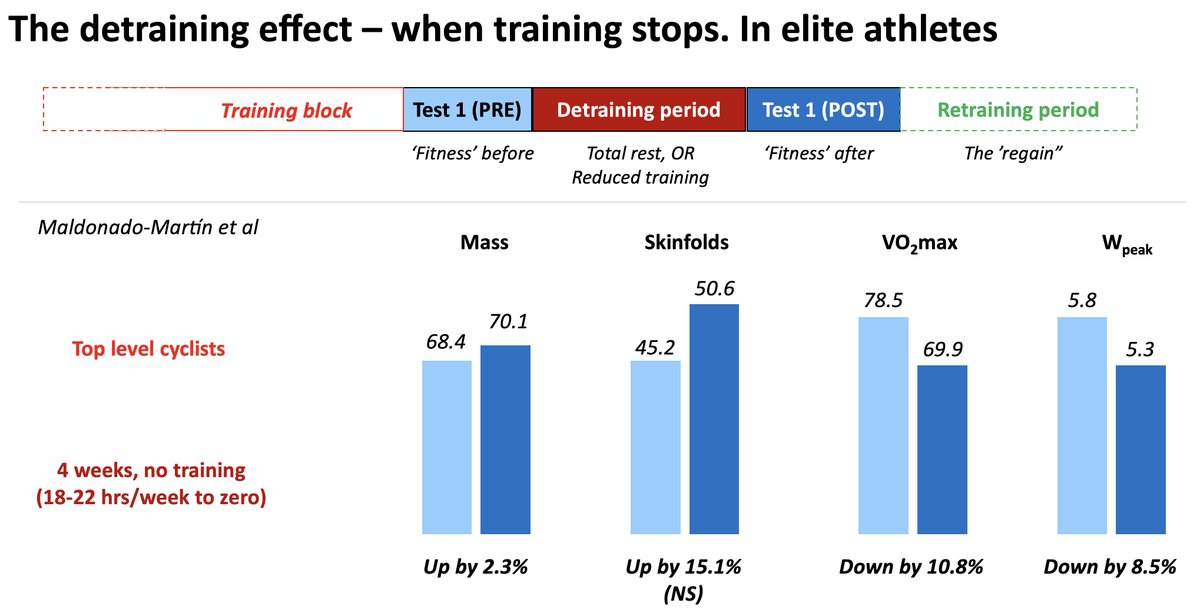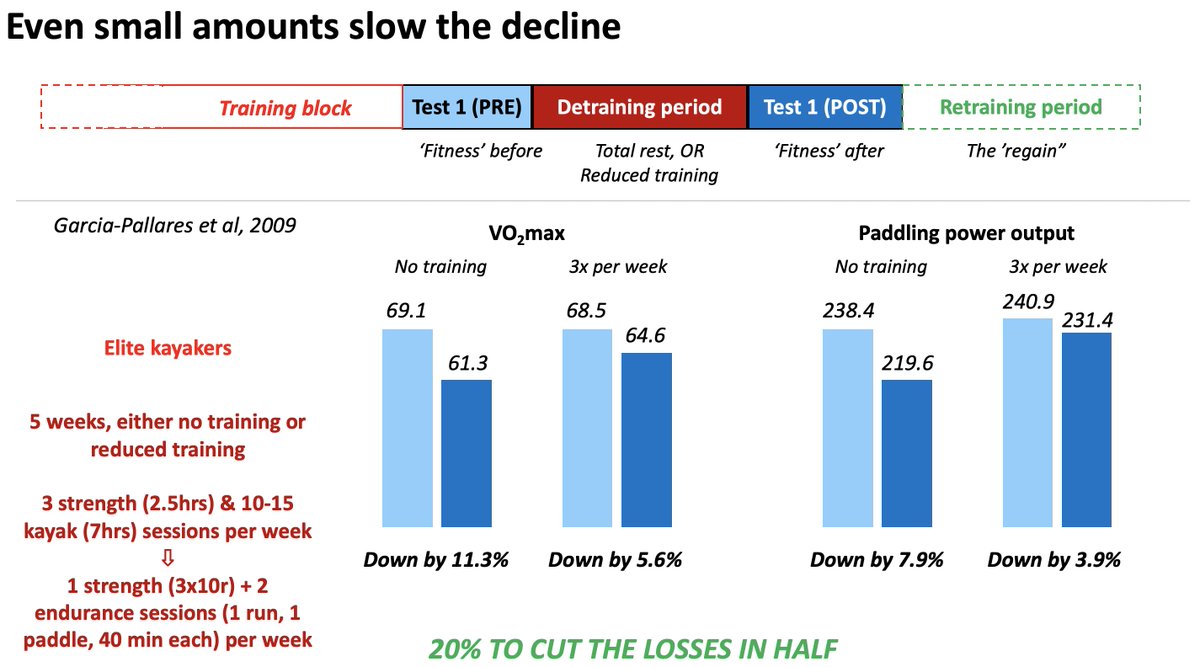So, yesterday I shared with you a presentation I made on #immune function & exercise, and then on detraining & fitness during #lockdown. How much, how fast, how to prevent etc? Here’s the link again to watch it n full, and a short thread to summarise: https://www.youtube.com/watch?v=ByD9HjJL554">https://www.youtube.com/watch... (1/)
(2/) To begin, there are a few times in exercise physiology (& other domains, I’m sure) where you hear about a “J-Curve” model.
Exercise & immune function is a classic J-Curve: Too little = bad, too much = bad, but in between = lower infection risk. Fitness is a health benefit
Exercise & immune function is a classic J-Curve: Too little = bad, too much = bad, but in between = lower infection risk. Fitness is a health benefit
(3/) Then you have the “Open Window hypothesis”, which is to the J-curve what Bonnie was to Clyde. Idea is that there’s a window after intense and/or prolonged exercise where you’re more vulnerable to infection. Diagram shows changes from hard (marathon) & easy (walk) exercise
(4/) In this model, intense/long exercise negatively affects innate & adaptive immune function, & causes inflammation. None of this happens for walking. Result is a shift to an anti-inflammatory state, which impairs immune response to new pathogen. Hence = a vulnerable “window”.
(5/) This is not entirely cut-&-dried. Some debate that it may not be exercise per se, but other risk factors that exercise brings, increasing risk. So a confounder is that races & training etc involve crowds, public spaces, travel, lack of sleep, anxiety etc which increase risk
(6/) For instance, gyms are spaces that involve exactly the opposite of social distancing (which we all know & hate now!), plus equipment with bugs and touching etc. So people who do a lot of training often may increase infection risk in 2 ways - exposure & impaired immunity
(7/) The reason this matters in this time is because you may need to reassess what you’re doing in training. Optimize health, not performance. And if you do train intensely & hard, take precautions that help your immune system deal with risk. Now is not a good time to get sick!
(8/) Of course, if you’re in lockdown, you’re in forced social distancing, so the “exposure” risk is minimised. But still, rather be healthy & reduce the focus on the performance sessions. And remember diet & sleep - your immune system’s enablers (not a great time for big diets)
(9/) Next, let’s talk detraining. You’re in lockdown, cut off from normal training facilities & routines. Maybe you can’t even go outside. Hugely frustrating (I know!). Unfortunately, the “use it or lose it” principle is in play here. Gains are reversible. But good news awaits!
(10/) First, goal-setting. You have a spectrum of options. You could do anything from “nothing”, to running marathons in your house. I wouldn’t advise either - exercise is healthy, as we’ve seen, but too much, right now, in that context, may be damaging too. So it’s about balance
(11/) To understand reversibility (“use it or lose it”), let’s look at 2 study examples. First, this one in German put healthy men in strict bed-rest for 2 months (yikes!), and measure a bunch of changes. None of them are good or healthy! From bone to cardio, we “decline"
(12/) Same in this one, looking at top level cyclists who stopped totally for 4 wks. Mass & skinfolds go up (though not sig.), and VO2max & performance down. Not a surprise. About 2-3% per week is the norm for these changes. You also get decrease plasma volume, enzymes etc

 Read on Twitter
Read on Twitter